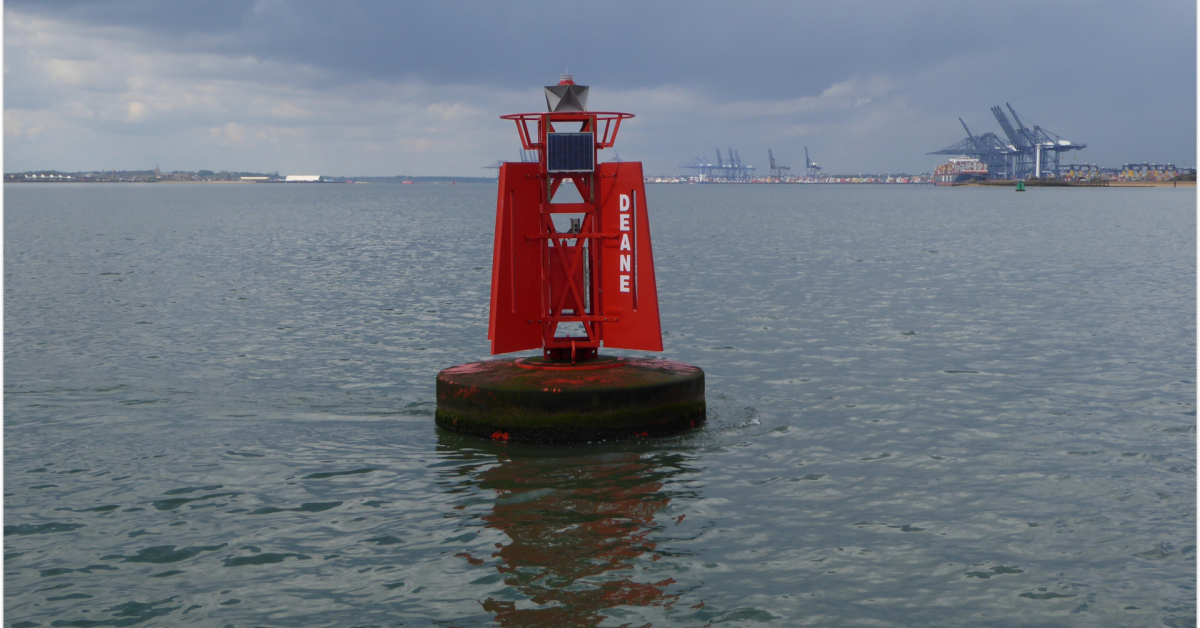Sir Anthony Deane led a long and interesting life so this article is quite long. In due course, it will be supplemented with a narrated presentation.
The Deane port hand mark of the Harwich channel, in position since the 2000s, commemorates Anthony Deane (1633 – 1721)1The Birth of Sir Anthony Deane discussion and the unravelling of the many of that name. A.W.Johns and some others give Deane’s date of birth as 1638 but 1633 seems more probable .
Table of Contents
- So Many Deanes
- Deane’s Schooling
- Shipwright
- Samuel Pepys’ Protégé
- Deane the Shipbuilder
- The Harwich Shipyard
- Second Anglo-Dutch War
- Dutch Invasion of Felixstowe
- The Careening Engine
- Deane’s Arrogance?
- Portsmouth, Innovation and the Carronade
- Deane’s Doctrine
- Intelligence Work
- Deane’s Ships
- Third Dutch War
- Naval Commissioner
- Experimentation
- The Galleys
- Sloops and Yachts
- Yachts for Louis XIV
- Knighthood
- Deane a Traitor?
- Deane’s Island
- Rebuilding the Navy
- Out of favour once again
- Deane and Czar Peter the Great
- The End
- In Memoriam
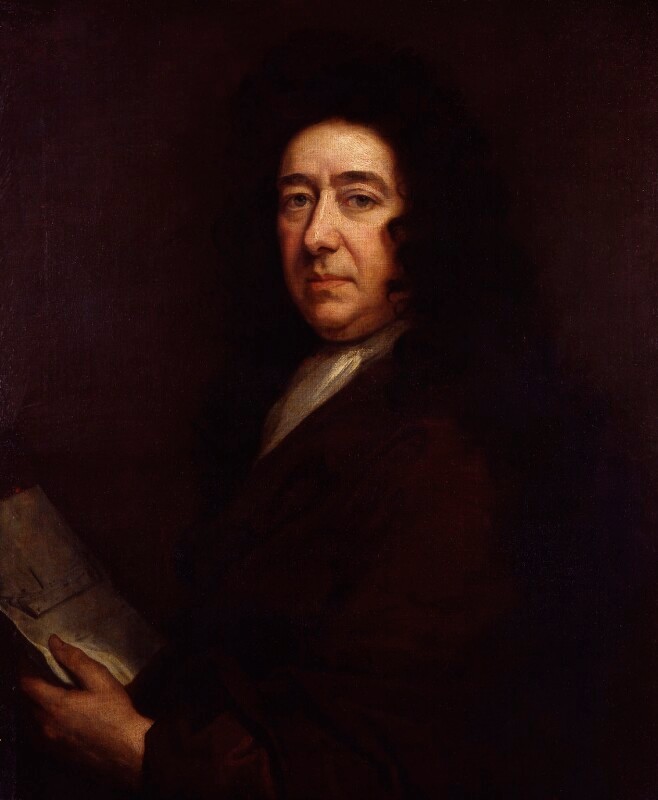
This portrait shows him in middle age as a serious, successful man. However, he had humble origins, a productive, eventful life and was a dynamic, forceful character.
He was not only important to the area as a seventeenth-century Harwich shipbuilder, soldier, M.P. and Mayor of Harwich but also nationally by strengthening the foundations for our naval capability. He lived in politically turbulent times with factions fighting for power in England and multiple conflicts and alliances with the Netherlands and France. These were interesting times.
So Many Deanes
It has been said that he was born in Harwich, Gloucestershire or London in either 1627, 1633 or 1638 and that he was a relative of the Regicide, Admiral Richard Deane. The confusion regarding his origins has, fortuitously, been recently untangled on the Harwicensis blog and those data are used here.
Deane’s father was Anthony and Deane had a son named Anthony, who was also a shipbuilder. Deane had the title of Captain, in the Army sense. There was another Anthony Deane, of Harwich in that era, who had a son Anthony, who was a sea captain, also with a son called Anthony. As if that were not enough, there was the Anthony Deane of Hyde Park2Alternative Deane – Deane of Dynes Hall, Great Maplestead, Essex who had a Harwich connection. Other Anthony Deanes were, of course, available as well. There is also a Book of Deanes which has more misinformation3The book of Dene, Deane. A genealogical history .
The History of Parliament entry, which has the wrong date of birth, states that his cousin may have been Admiral Richard Deane in the service of Cromwell’s Commonwealth and signatory to Charles I’s death warrant4Admiral Richard Deane as possible relation is mentioned in History of Parliament Online unlikely given this explanation The Wrong Deanes – Harwicensis , but the link seems tenuous.
Deane’s Schooling
The relevant Anthony Deane was born in Stow on Wold, Gloucestershire in 1633, the second son of Anthony Deane, a carpenter by trade. Four years later the family were living in Greenwich where the father Anthony died. Young Anthony was apprenticed as a shipwright, possibly with Ralph Reynolds in Greenwich, around 1644 and enrolled at the Merchant Taylor’s School5Merchant Taylors School Register 1646 enrolment, note that apprenticeships usually started at 16. in London two years later. He may have won a scholarship given the family circumstances. This was a Grammar School and his education would have included Greek, Latin, some Hebrew and, presumably, drawing or draughting. School hours were 7 a.m. to 5 p.m. The school was destroyed in the Great Fire.
Shipwright
By 1657, aged about twenty-four, he was a shipwright. Cromwell’s regime had made significant progress in building up the, previously negligible, Navy and had recently prevailed in the First Anglo-Dutch War so we can imagine that Deane had been kept busy in his trade. In 1660, as Charles II came to the throne and created the ‘Royal’ Navy, Deane was appointed Assistant Shipwright in Pett’s, nearby, Woolwich dockyard. Whether this was a move or promotion is unclear. The Pett family, with Harwich connections, were dominant6See the Pett dynasty for shipbuilding at that time in English shipbuilding and had been for some time. Samuel Pepys, the controller of the Navy, was not enamoured of their power and wanted to weaken their grip on the industry. Pepys would undoubtedly have encountered Deane at Pett’s shipyard7A.W.Johns says Deane was building yachts Charles and Anne in 1660 – these dates conflict with Lavery and the dates in Wikipedia .
Samuel Pepys’ Protégé
The relationship between Pepys and Deane grew when, in 1662, Deane accompanied Pepys to Epping and Waltham forests to survey the felling of ship-building timber. During that day, Deane explained the intricacies of how the volume of timber was measured to the advantage of the supplier and loss to the Crown. The trick involved using ‘off square’ measurements to increase the calculated area and thus volume of the timber. Fraud, theft, and corruption were rife in the shipping industry of that era and timber supply was no exception. Over their long dinner discussion that evening Deane clearly made a favourable impression on Pepys.
I find Deane a pretty able man, and able to do the King service; but, I think, more out of envy to the rest of the officers of the yard, of whom he complains much, than true love, more than others, to the service. He would fain seem a modest man, and yet will commend his own work and skill, and vie with other persons, especially the Petts, but I let him alone to hear all he will say.
Samuel Pepys Diary
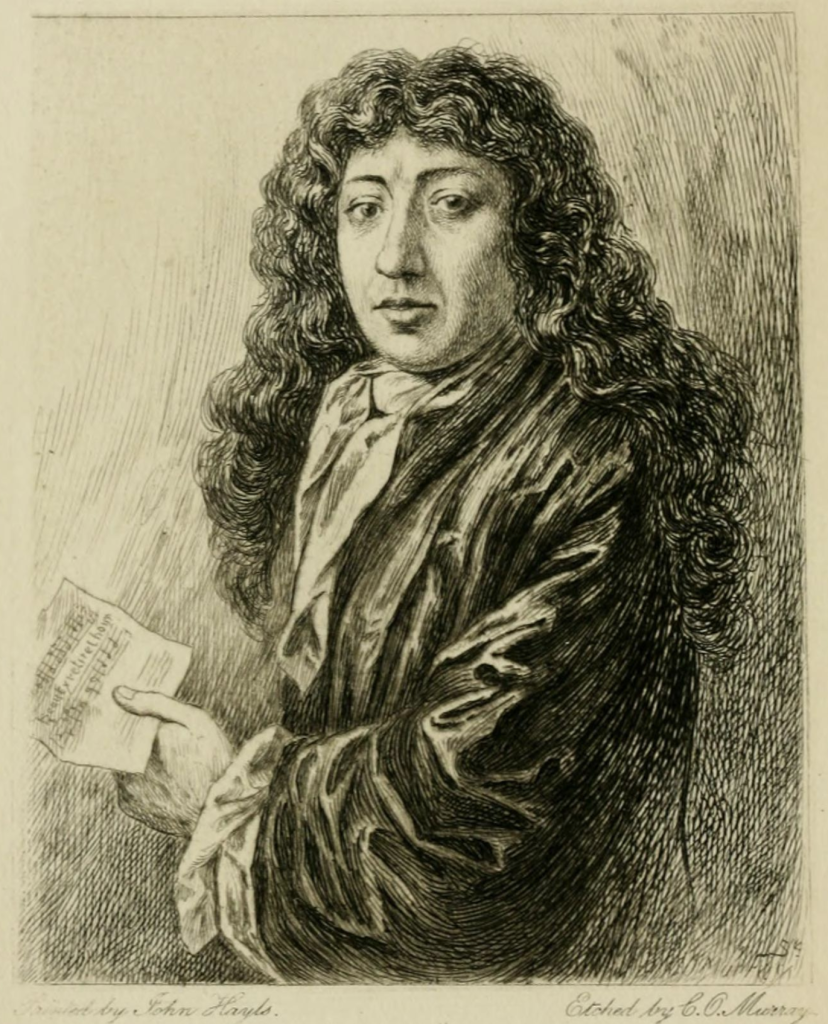
Later, in his diary of 1663, Pepys speaks of a slide rule for measuring timber8Slide Rule mentioned in Pepys Diary – Tuesday 14 April 1663, there were various devices of this nature. , almost certainly Deane gave him this. The intricacies of measuring wood, which Deane explained to Pepys, would be a logical origin of the phrase “square deal” although it is attributed elsewhere. The sourcing and selection of wood for shipbuilding was a critical skill at the time and Deane was, later in the 1670s, to prove his skill when wood was in short supply due to the Great Fire and intensive ship construction. He was also to upset the powerful Earl of Clarendon, Lord Chancellor, by selecting trees to be felled on his Wiltshire estate. Clarendon accused Pepys of:
sending “…the verist Fanatique [Deane] that is in England to mark them, on purpose to nose —[provoke]— him” (Fanatique was an insulting term related to religion at the time.)
Pepys Diary 14 July 1664
Deane the Shipbuilder
Over the next two years, the two men met often and Deane appraised Pepys of the malpractice in the shipyards and, more importantly, the finer points of shipbuilding. Ships were needed for the anticipated Second Dutch War (1665-67) and, consequently, in October 1664, the thirty-one year old Deane was sent as Master Shipwright, to re-open the Harwich yard. In the same year, Captain John Taylor was appointed as Naval Commissioner for Harwich although his role appears to be mostly that of settling accounts. The relationships between the trio of Deane and Taylors do not look to have been harmonious.
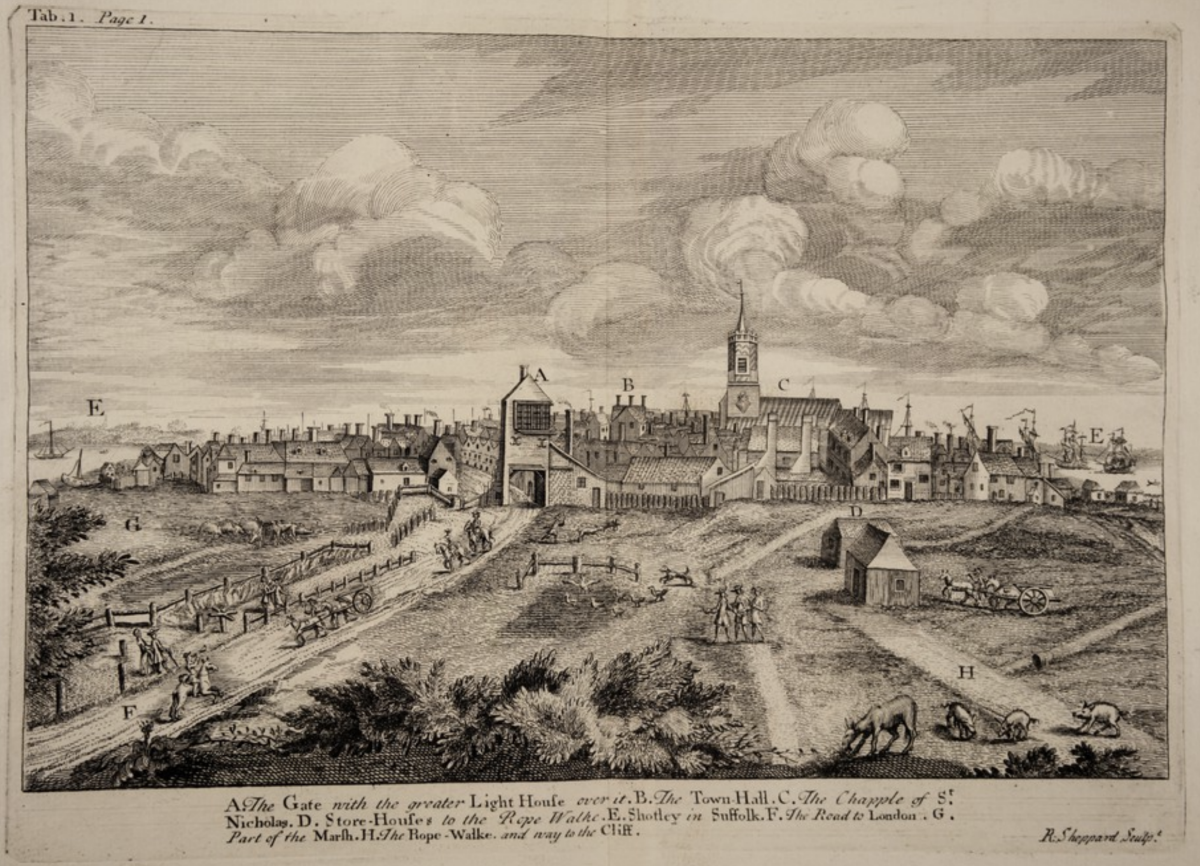
He had three children by a previous marriage, including Anthony Junior, born in 1659 and it is likely that his first wife died giving birth to him. Deane is recorded as living at Ipswich whilst working at Harwich and being married at nearby Great Bealings. It may have been family requirements that dictated living in Ipswich since travelling to Harwich would have been time-consuming. He was eventually to marry for a third time and altogether to have at least fourteen children.
The Harwich Shipyard
The shipyard at Harwich, or Kings Yard, was already in existence, built on reclaimed land. Later it would become a private yard and one hundred and forty years after this time was to build HMS Conqueror, the ship which accepted the surrender at Trafalgar. By now the Dutch war had started and, after constructing a lighter for transporting timber, Deane’s first ship was the Rupert, a third rate of sixty guns built, in 1666. Rupert was named for Admiral Prince Rupert and was superior to two others of the same class built on the Thames. He had also constructed the Fanfan from, he says, the shavings from Rupert, of which more later. This was Deane bragging as the ships had been ordered by the Crown, but he was an economical builder. Fanfan was to see action almost immediately after launch.
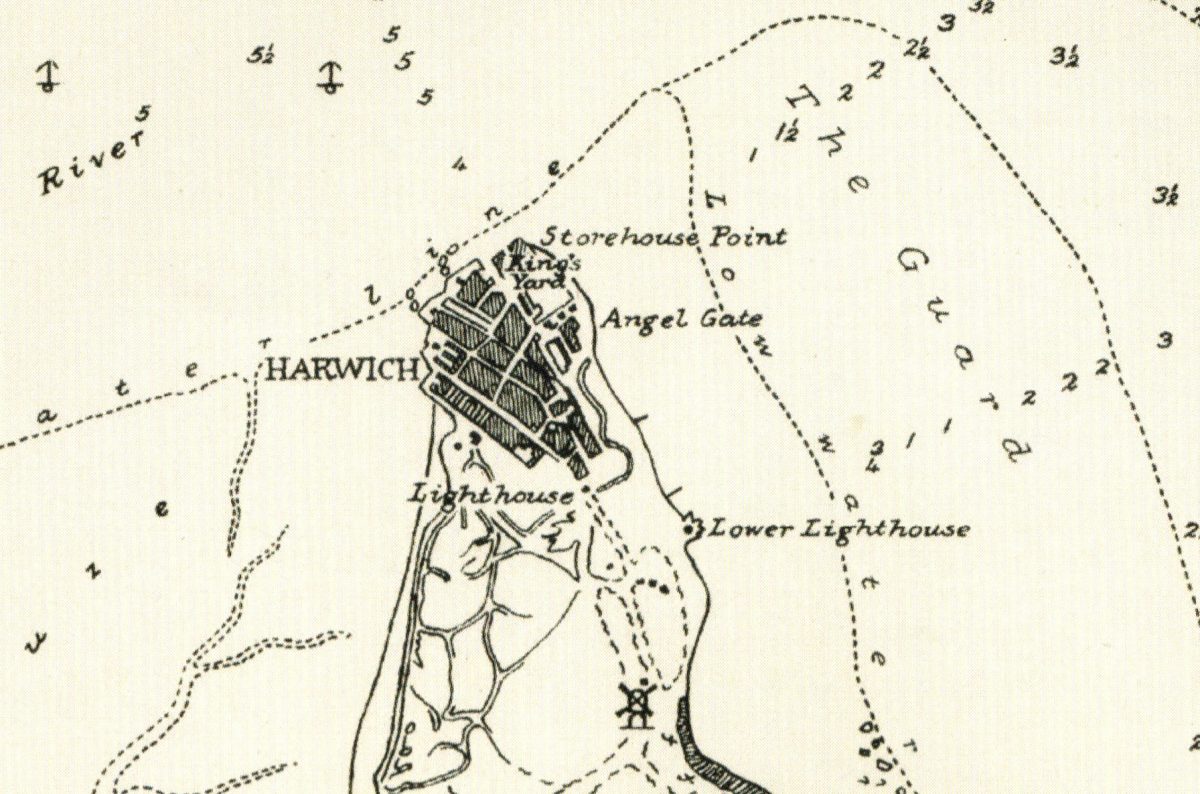
Also at Harwich, as keeper of naval stores, was Silas Taylor, a one-time Army Captain and future historian who is quoted later, presumably unrelated to Captain Silas Taylor9The Updated version of Silas Taylor’s account Wellcome Collection. ‘The History and Antiquities of Harwich and Dovercourt, Topographical, Dynastical and Political / First Collected by Silas Taylor Alias Domville, Gent. …; and Now Much Enlarged in All Its Parts with Notes and Observations Relating to Natural History … by Samuel Dale.’ .
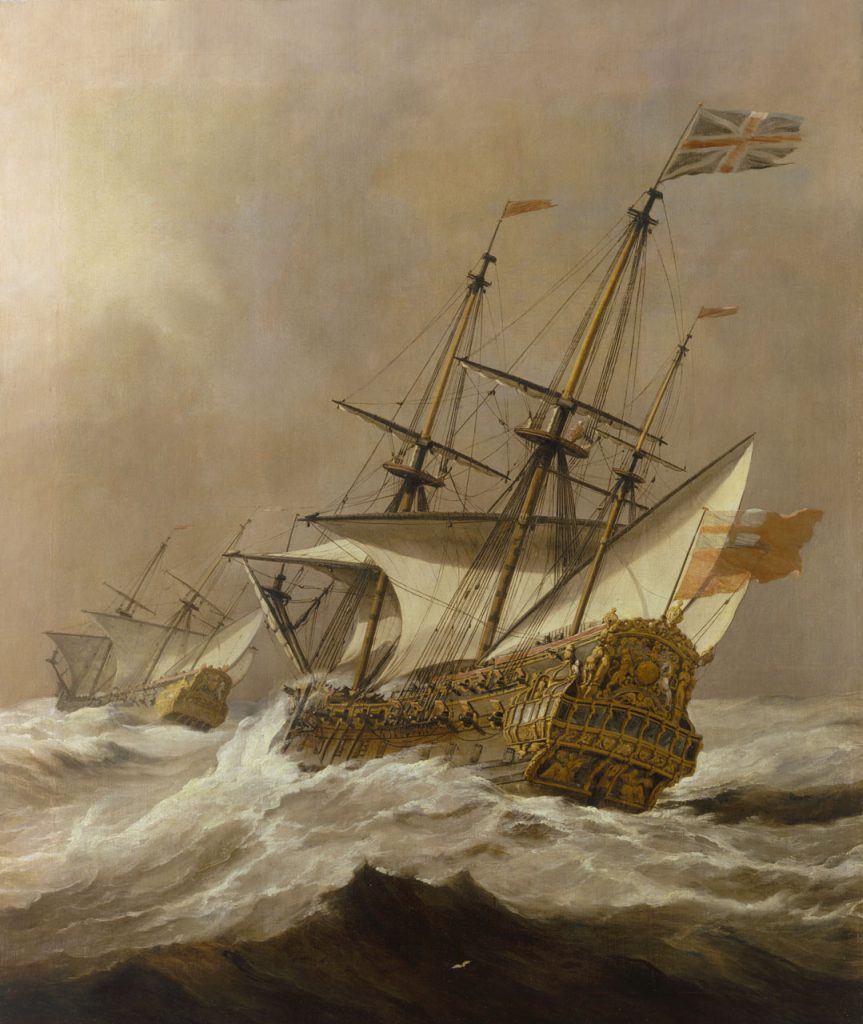
Resolution in a Gale – Willem van de Velde the Younger
Deane’s second ship, Resolution, followed in 1667. She was rebuilt over the years but lost in the Great Gale of 170310Resolution – it is not yet confirmed if the wreck found at Norman’s Bay on the South Coast in 2007 is the Resolution. – Norman’s Bay Wreck . Pepys had a high opinion of her:
So home, and there Captain Deane come and spent the evening with me, to draw some finishing lines on his fine draught of “The Resolution,” the best ship, by all report, in the world, and so to bed.
Second Anglo-Dutch War
Seventeen ships were lost to the Dutch in the brutal Four Days Battle in 1666. Deane’s work in repairing the remnants of the fleet enabled it to successfully reengage the Dutch only seven weeks later at Orfordness. Delay would have meant disaster. Unfortunately, following this success, financial difficulties, the earlier Plague and then the Great Fire of London, led to little further work being done on the fleet. However, in preparation for the next round 11A full account of the Dutch invasion is given in Hussey, Frank. Suffolk Invasion: The Dutch Attack on Landguard Fort, 1667. T. Dalton, 1983. Deane gained a military role:
The workmen of Harwich dockyard are allowed, at their own desire, to be listed and exercised, which will cost the King nothing and may be very serviceable. They are about 200. The Duke of York wants a commission for Ant. Deane to list and train them in a company for defence of that place
Calendar of State Papers, domestic series, of the reign of Charles II12Calendar of State Papers, domestic series, of the reign of Charles II
Through this militia role, Deane was known as ‘Captain’ which accounts for the confusion with the later Captain Anthony Deane and the cause of resentment from Silas Taylor, also a Captain. Deane was subsequently empowered to impress merchant vessels for use in defence against the Dutch and spent the great sum of £452 on the timber used to fortify the dockyard and Harwich.
He was unpopular with some colleagues and customers. Silas Taylor’s opinion was:
“Mr. Deane, being made captain of the yard, is insolent, and labours to grieve all, and please none.”
June 19th 1667 Calendar of State Papers, domestic series, of the reign of Charles II 13Calendar of State Papers, domestic series, of the reign of Charles II
The captain of the Colchester complained:
“I bore his uncivil tongue with patience… to avoid a mutiny between carpenters and seamen.”
and he also talks of Deane going about Harwich
“accompanied by fifteen men armed with cudgels and a brace of pistols in his pocket”
Pepys Diary Wednesday 15 July 1668
The Dutch returned in 1667 with their audacious assault on the Medway where they captured the flagship and wreaked huge damage.
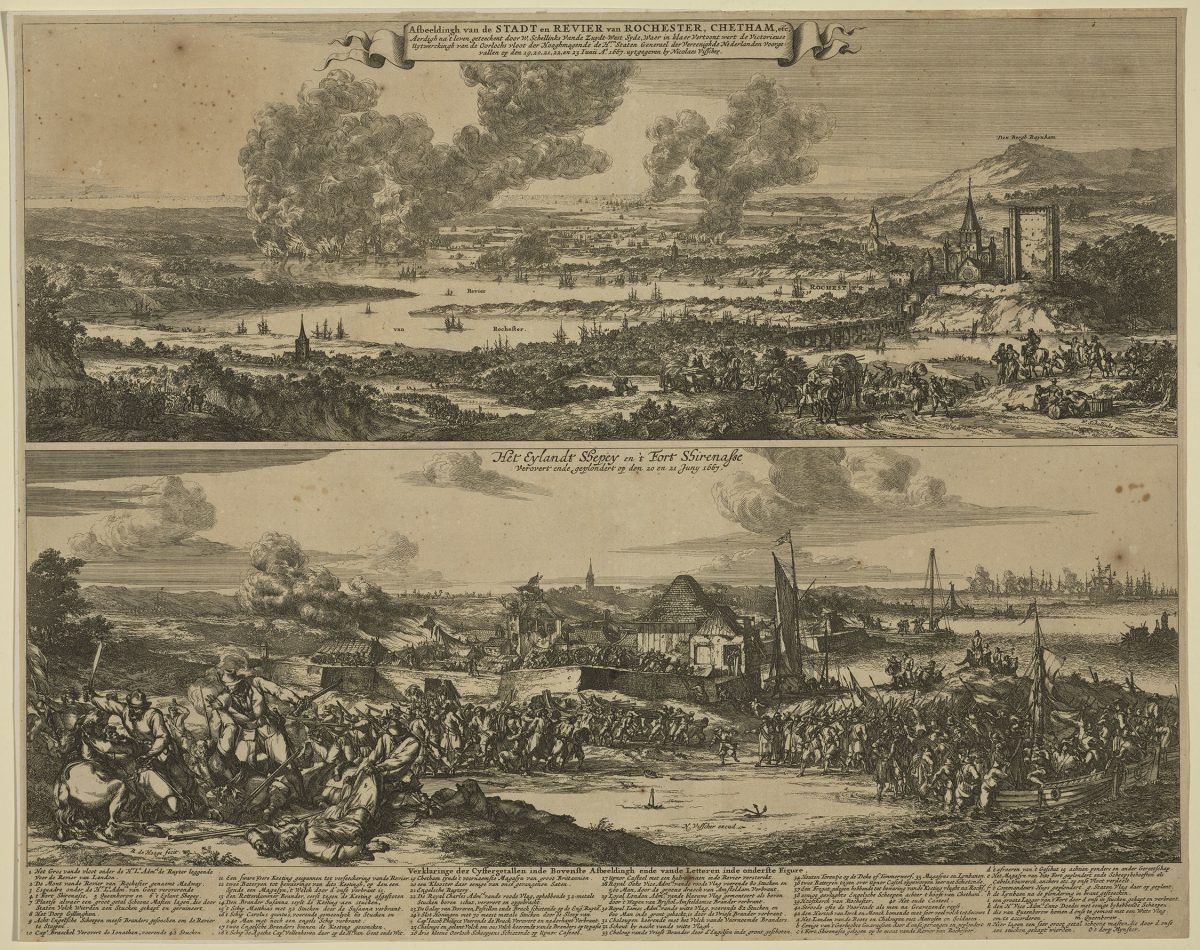
Dutch Invasion of Felixstowe
To drive home their advantage, they next invaded Felixstowe to take Landguard Fort and hence the vital Harwich Haven. Dutch fleet movements up and down the coast could be observed from the shore and the defenders marched north to follow the Dutch who then turned and came back. Re-crossing the Deben whilst under attack proved difficult allowing the Dutch to land 1600 troops put on the beach near Cobbold’s Point and march to the fort. The plan was to flank the fort with ships’ guns and then take it from the land. Landguard’s salvation was the protective barrier of sandbanks that bless our shores made doubly treacherous by the removal of buoys and movement of leading marks. Fortunately, Greenvile Collins, who is encountered later, had not yet surveyed the coast and published his charts14Charts sufficiently accurate for the needs of the Dutch would not exist until 1804 and Graeme Spence. .
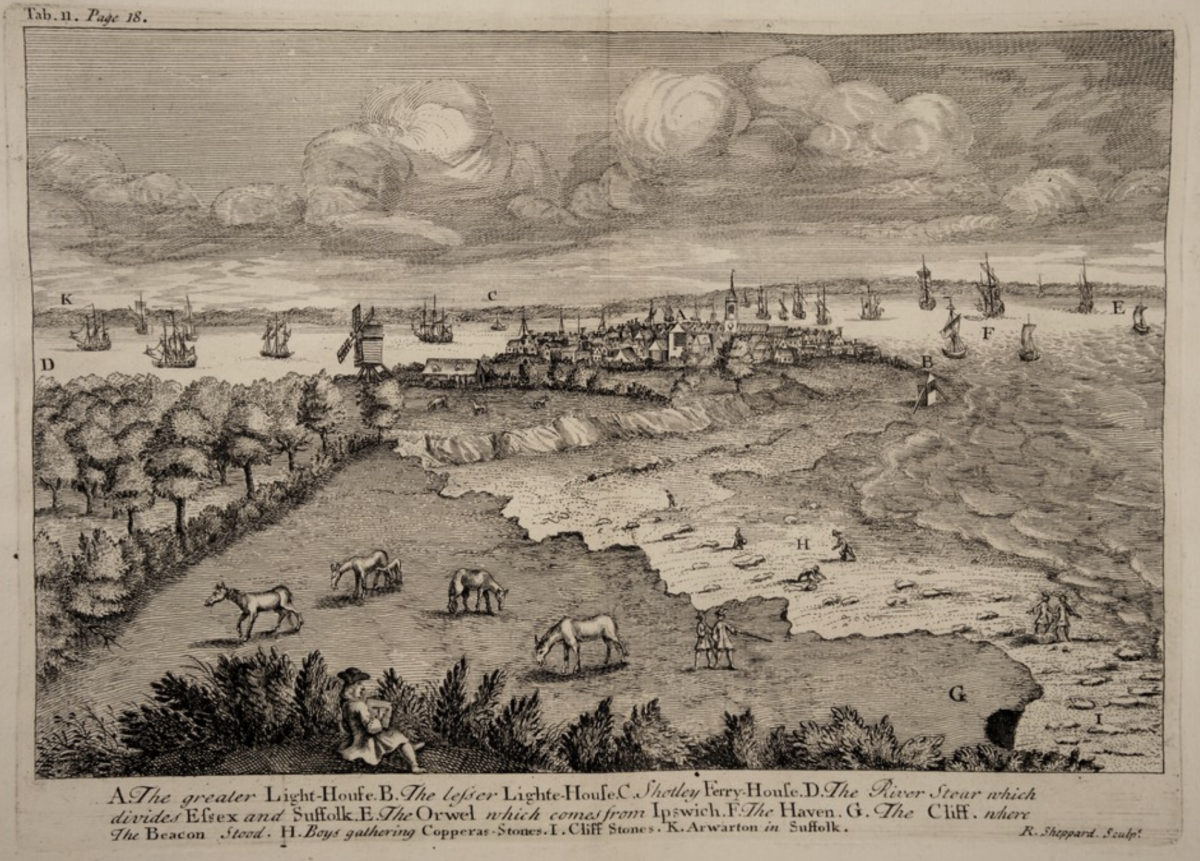
Deane’s new method for deploying fireships against the Dutch, although praised by Deane himself was not so well regarded by his peers and had to be amended. It was probably also Deane who dealt with the fraught issue of the lighthouse (B on the drawing):
When at the eleventh-hour James II and his advisers were trying might and main to ward off the Dutchman’s coming, and when the Trinity House officials, acting under Pepys’ orders, were busily engaged in removing buoys and altering the position of familiar coast marks, the small, or lower, lighthouse at Harwich was an object of consideration. It was — so went forth the order — to be removed ‘ and ‘ set up in another place. ‘ But how? The operation could not be rapidly performed, for the building was a solid bit of masonry, and all depended on haste. A happy idea at last struck some one : the Dutch ships would be as easily misled by an erection of canvas, and that, with the utmost secrecy, ‘ could be stretched on a timber frame, carried to the place appointed, and set up in less than an hour, whilst a charge or so of gunpowder would at the same time level the real lighthouse.
From Hardy, William John. Lighthouses; Their History and Romance. 15Lighthouse – . Lightouses; Their History and Romance., 1895.
The lighthouse, however, remained intact. Deane later donated generously to the new Guildhall in the 1670s although this was later rebuilt. The war concluded with a peace treaty and the fleet in a parlous state.
The Careening Engine
There is mention of a ‘careening engine’16Careening engine – Johns, A. W. ‘Sir Anthony Deane’. The Mariner’s Mirror 11, no. 2 (1 January 1925): 164–93. which Deane built for £35. This supposedly worked well and would have gripped a ship so that it could be rotated to clean the underside of the hull. No more is known of this interesting machine; it would have been contemporary with the Harwich treadmill crane although much larger. The yard is said to have had two cranes, one may have been the Harwich Treadmill Crane.
Deane’s Arrogance?
Some of what is known of Deane’s time in Harwich comes from ‘Silas Taylor’s Antiquities’, a valuable source17(The Updated version of Silas Taylor’s account Wellcome Collection. ‘The History and Antiquities of Harwich and Dovercourt, Topographical, Dynastical and Political / First Collected by Silas Taylor Alias Domville, Gent. …; and Now Much Enlarged in All Its Parts with Notes and Observations Relating to Natural History … by Samuel Dale.’ . He disliked Deane and was resentful of his title as Captain. He had, however, a grudging respect despite describing Deane’s arrogance when he reported to Pepys:
“when much talk, and most of it against Captain Deane who I believe to be a high proud fellow, but he is an active man and able in his way, and so I love him.”
Silas Taylor

Portsmouth, Innovation and the Carronade
In 1668 Deane, now thirty-five was appointed as Master Shipwright at Portsmouth at Pepys’ behest. Not being content with just building ships he also developed a new form of gun. It does not appear to have been adopted at the time but may have been an early form of the carronade which was, over a century later, to become a favourite of Captain Philip Broke of the Shannon and Orwell. The Carronade fired a heavy shot over a short range to smash the opponent’s hull. This version was rather small but did demonstrate the concept.
In the afternoon we walked to the Old Artillery-Ground near the Spitalfields, where I never was before, but now, by Captain Deane’s invitation, did go to see his new gun tryed, this being the place where the Officers of the Ordnance do try all their great guns; and when we come, did find that the trial had been made; and they going away with extraordinary report of the proof of his gun, which, from the shortness and bigness, they do call Punchinello. But I desired Colonel Legg to stay and give us a sight of her performance, which he did, and there, in short, against a gun more than as long and as heavy again, and charged with as much powder again, she carried the same bullet as strong to the mark, and nearer and above the mark at a point blank than theirs, and is more easily managed, and recoyles no more than that, which is a thing so extraordinary as to be admired for the happiness of his invention, and to the great regret of the old Gunners and Officers of the Ordnance that were there, only Colonel Legg did do her much right in his report of her. And so, having seen this great and first experiment, we all parted, I seeing my guests into a hackney coach, and myself, with Captain Deane, taking a hackney coach, did go out towards Bow, and went as far as Stratford, and all the way talking of this invention, and he offering me a third of the profit of the invention; which, for aught I know, or do at present think, may prove matter considerable to us: for either the King will give him a reward for it, if he keeps it to himself, or he will give us a patent to make our profit of it: and no doubt but it will be of profit to merchantmen and others, to have guns of the same force at half the charge.
Tuesday 20 April 1669 Pepys Diary
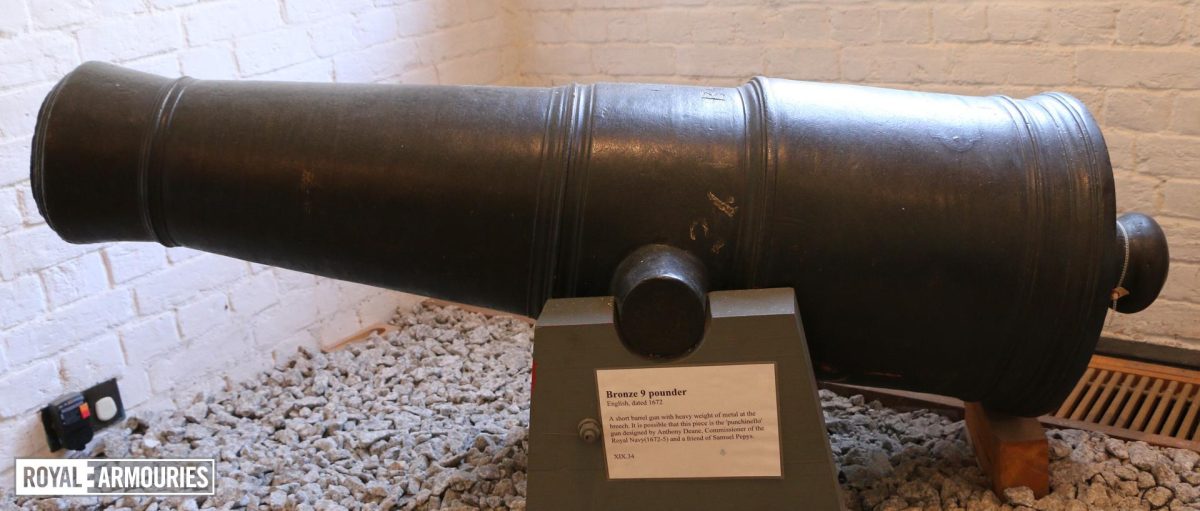
Pepys was an inquisitive man and Deane explained shipbuilding to him in their many discussions. Pepys encouraged Deane to publish his knowledge:
…very good discourse, and particularly about my getting a book for him to draw up his whole theory of shipping, which, at my desire, he hath gone far in, and hath shewn me what he hath done therein, to admiration. I did give him a Parallelogram, which he is mightily taken with;
Pepys Diary Thursday 22 April 1669
Deane’s Doctrine
This meeting may have been what prompted Deane to publish ‘Deane’s Doctrine of Naval Architecture’ in 167018‘Deane’s Doctrine of Naval Architecture, 1670 – Sir Anthony Deane – Introduced by Brian Lavery’ – This is held in the Pepys library at Cambridge. which codified the principles of shipbuilding. Previously, it was uncertain, until launch, what the draught of a ship would be and, thus, its stability. It sometimes happened that ships, upon launch, were found to have gun ports far too near the waterline, clearly an issue.
The ‘Doctrine’ was a significant contribution to British shipbuilding and, although it may be that Pepys’ praise for Deane’s work added to its impact, it was a key step in turning shipbuilding into a science from a craft, certainly for warships. The text is in three main parts: an Arithmetic and Geometry tutorial; how to design a hull then parts and sizes and rigging. There are dimensions for several classes of ships followed by detailed worked examples.
Deane was a good self-publicist and the Doctrine was not actually a breakthrough. It was also the case that Pepys was keen to advance Deane’s career. A more mathematical approach had been described by Matthew Baker in the Elizabethan era and Pepys had a copy before the Doctrine19Friday 1 April 1664 (The Diary of Samuel Pepys) (pepysdiary.com) Fragments of Ancient English Shipwrighty – The Nautical Archaeology Digital Library (shiplib.org) and also Mathew Baker and the Art of the Shipwright. https://www.mhs.ox.ac.uk/staff/saj/thesis/baker.htm. Accessed 18 Mar. 2023.. Edmund Bushnell had published a similar work preceding the Doctrine in 1664 of which many copies were printed20Bushnell, Edmund. The Compleat Ship-Wright Plainly and Demonstratively Teaching the Proportions Used by Experienced Ship-Wrights According to Their Custome of Building, Both Geometrically and Arithmetically Performed : To Which by Edmund Bushnell, Ship-Wright. Jan. 2007, https://ota.bodleian.ox.ac.uk/repository/xmlui/handle/20.500.12024/A30706.. Another similar volume was published after the Doctrine in 1684 by Edward Battine21The Method of Building, Rigging, Apparelling and Furnishing His Ma:Ties. Shipps of Warr According to Their Rates. With the Exact Proportion and Charge of All Things Requisite Thereunto. Also the Charge of Wages, Victualls, & Necessaries as Well as for Ships in Harb.r as at Sea. The Numbers and Charge of Officers and Workmen at Each Dockyard for Building and Repairing His Ma:Ties. Ships &c. The Salaries and Allowances Granted to Commissioners & Officers of His Majesties Navy. And the Whole Charge of the Same for One Year. – Yale University Library. https://collections.library.yale.edu/catalog/17268860. Accessed 18 Mar. 2023.. England was not unique in developing such systems and work had been progressing elsewhere in Europe22European shipbuilding see – Corradi, Massimo, and Claudia Tacchella. AT THE ORIGINS OF SHIPBUILDING TREATISES: JOSEPH FURTTENBACH AND THE ARCHITECTURA NAVALIS. 2018..
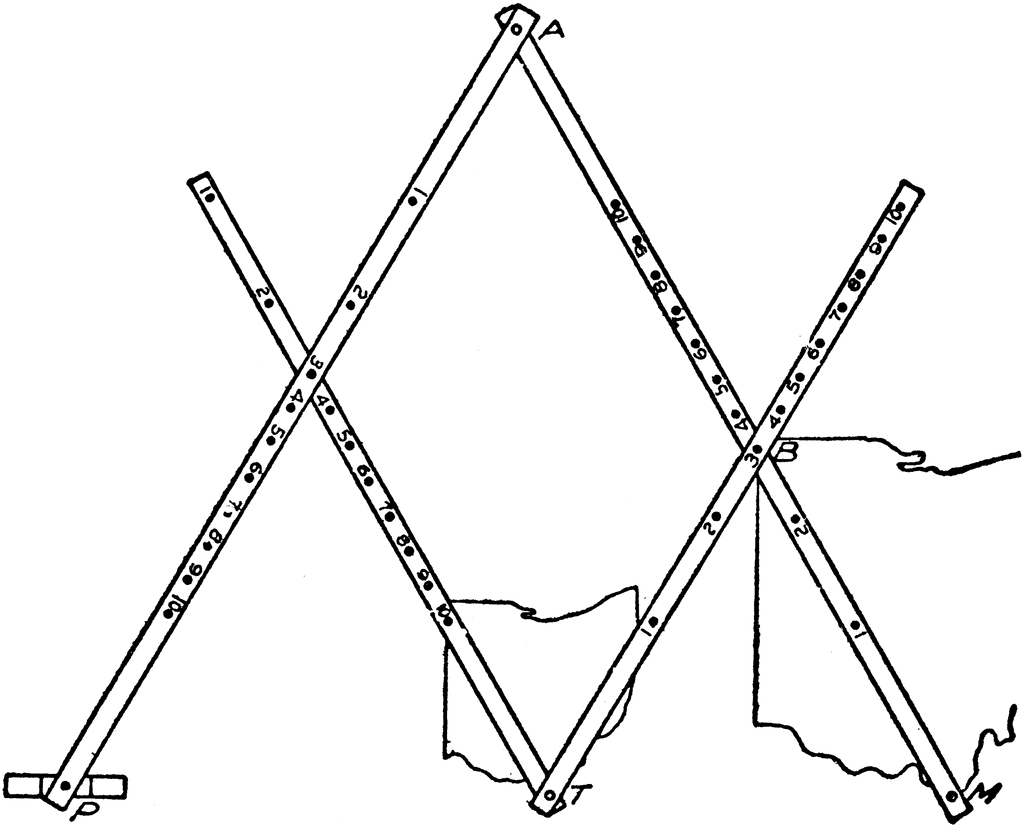
The parallelogram mentioned is today known as a ‘pantograph’23Pantograph – Wikipedia and is used to copy and scale drawings. This would have been extremely useful in draughting and copying plans and may have been unknown to Deane since the device had only appeared a few years earlier.
Intelligence Work
Deane was also conducting intelligence-gathering operations. He submitted reports, presumably mostly from his agents, on the defences and naval strength of the Dutch and French. The French, at this time, were sometimes a friend and other times a foe. He was also instrumental in improving the systems and logistics for the rapid repair of warships following fleet actions. Up to this time repairs were the business of individual captains. Under Deane, the damage was assessed systematically and spares were strategically positioned for quick response.
Deane’s Ships
Over the decade of Deane’s shipbuilding career for the Crown (1666-75) he built twenty -five of the ninety-four ships constructed. The ships built by Deane at Harwich lasted well for the time with three of the four big ships being sound enough to rebuild twenty years later:
He was the first to use iron ‘knees’ or ‘dogs’, which are part of the frame, in ship construction by fitting them in the Royal James that he built at Portsmouth24Iron dogs or knees – Goodwin, Peter. ‘The Influence of Iron in Ship Construction: 1660 to 1830’. The Mariner’s Mirror 84, no. 1 26–40. . This must have been a desperate measure given that iron cost over a hundred times more than oak25L. G. Carr Laughton (1940) HULL PROTECTION, The Mariner’s Mirror, 26:1. Pepys reprimanded him for doing so without permission but Deane’s defence, later endorsed by the King, was:
…between you and myself, the King must build no more ships, if nothing can be invented but
knees…, we having not one knee in the yard.
Third Dutch War
This was a busy time as the Dutch decided to wage war again for a couple of years (Third Anglo-Dutch War 1672-74). Although a keen exponent of frigates, the Royal James was Deane’s first 102-gun first-rate. Only four months later she was burned and sunk by Admiral De Ruyter’s Dutch fireships at Sole Bay (28 May 1672). Not all his ships were successful: the Royal Charles proved unstable but following the opportunity to examine the French ship Superbe, when repairing battle damage for our temporary allies, he changed his approach.
Naval Commissioner
Following Deane’s work on rapidly repairing the remnants of the fleet after this battle he became a Naval Commissioner, equivalent to a Board Director. Deane, now approaching forty, was also given special responsibilities in assisting Tippetts, the new Surveyor. Deane had worked with Tippetts before and, due to Tippett’s health problems, it was Deane who became the de facto Surveyor.

Changes at the Admiralty led to Deane being tasked with reporting on the “State of the Navy” and making recommendations in 1674 as to how it could be brought to combat readiness. This included standardising the dimensions and fittings of ships, using his Doctrine, which would later have advantages of economy and efficiency. Political delays meant that the required building did not start for three years at which time Charles II decreed that Deane’s rules, or Establishments, should be used.
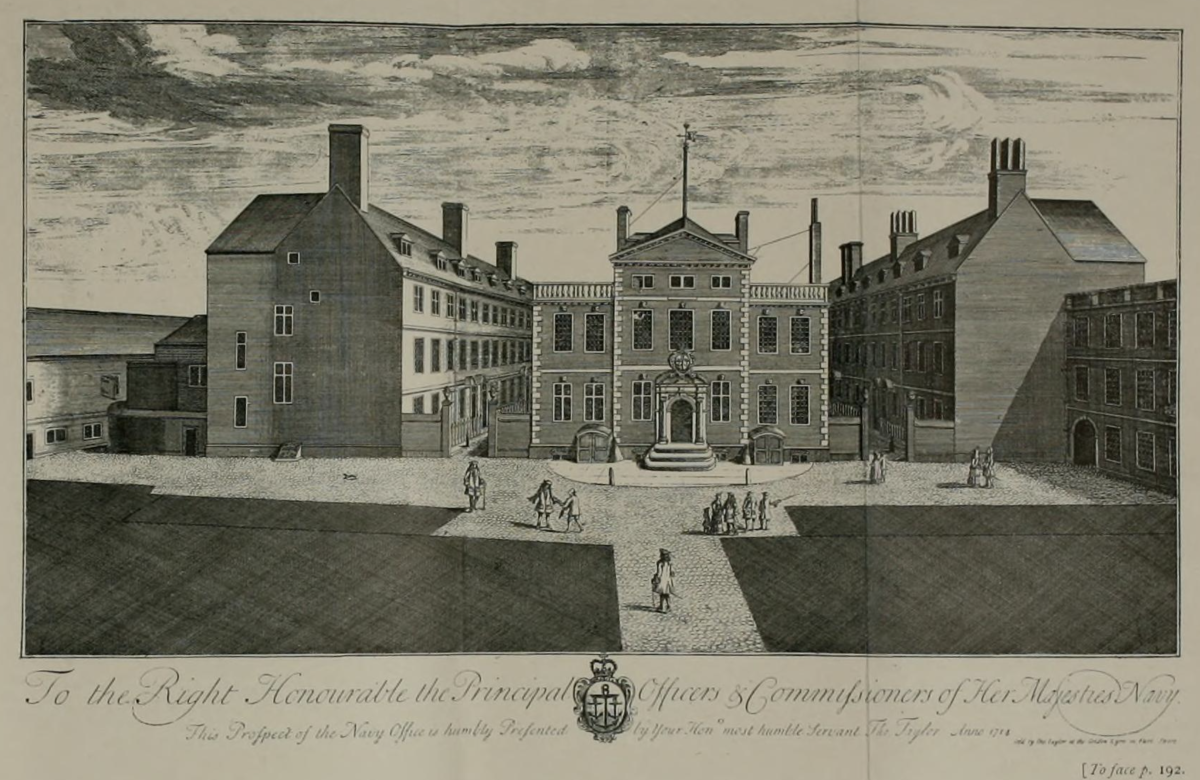
Experimentation
Deane was innovative, with, for example, an experiment on the Pheonix, and later the Harwich, with lead sheathing to combat the rapid decay of hulls. This was not successful as the electrolytic interaction with iron, not then understood, caused further problems; the practice was therefore banned in 1682. The better solution of using copper was not to be adopted for another century. At the request of the King and Duke of York, he also developed a defensive shield to guard a ship against cannon fire and movable screens to protect crews on deck.

The Galleys
In the Mediterranean barbary pirates, whose oared galleys could easily escape sailing ships, had to be dealt with. Deane’s son, Anthony26It has been said that this was John but surely he would have been too young at 16? 247182.pdf (bris.ac.uk) , had followed in his father’s footsteps and, in 1676, they designed and built the Charles and James galley-frigates with oars. Greenvile Collins, who was later to survey our coast served as master on both of these27Greenvile Collins on Wikipedia . Most probably Deane and Collins would have met at this time. Later, Collins, after surveying our coasts became master of the Royal Yachts Mary and Fubbs. Collins was certainly known to Pepys and dedicated the Harwich area chart to him.
Sloops and Yachts
Fanfan, mentioned earlier, was a sloop of a mere 33 tons and four guns, built at Harwich, as Deane claimed from the “shavings” of the third-rate Rupert for Charles’ nephew and Admiral of the Navy, Prince Rupert. Fanfan (the name means infant in French), along with Spy, appear to have been built as shallow draught vessels suitable for chasing off Dutch ‘Pickaroons’ that were harassing local vessels28The Updated version of Silas Taylor’s account Wellcome Collection. ‘The History and Antiquities of Harwich and Dovercourt, Topographical, Dynastical and Political / First Collected by Silas Taylor Alias Domville, Gent. …; and Now Much Enlarged in All Its Parts with Notes and Observations Relating to Natural History … by Samuel Dale.’ . In 1666 the Fanfan very cheekily attacked Admiral De Ruyter’s becalmed flagship and, whilst she could do little damage, this was humiliating for the Dutch.
This was described in a letter to the King:
That on Thursday Morning (July 16) it being very calm, and the Enemy to Windward of them , the Fan-fan, a small new Sloop of two Guns , built the other Day at Harwich, made up with his Oars towards the Dutch Fleet, and drawing both his Guns to one side , very formally attacked De Ruyter, (in the Admiral’s Ship of Holland) and continued this honourable Fight so long, till she had received two or three Shots from him between Wind and Water; to the great Laughter and Delight of our Fleet , and the Indignation and Reproach of the Enemy29(The Updated version of Silas Taylor’s account Wellcome Collection. ‘The History and Antiquities of Harwich and Dovercourt, Topographical, Dynastical and Political / First Collected by Silas Taylor Alias Domville, Gent. …; and Now Much Enlarged in All Its Parts with Notes and Observations Relating to Natural History … by Samuel Dale.’ .
Silas Taylor’s account
Deane built the yachts Charles and Anne for the King and Duke of York. The King and his brother essentially invented leisure yachting. Note that their yachts were small ships more akin to a modern Mega yacht than a leisure yacht. The Charles, for example, displaced 120 tons. The Cleveland, below, was 107 tons. On the Charles, accommodation for the owner took well over half the ship, leaving the thirty crew in cramped conditions.

Yachts for Louis XIV
These were fast and successful leading to him constructing, at the King’s request, two yachts for Louis XIV. One of these was demonstrated to King Charles at Portsmouth on the same day that His Majesty knighted Deane. The yacht was substantial since after being wheeled to the water’s edge it was lifted in by a crane and weighed at least forty-two tons. Pepys said of it:
“…seemed to outdo anything that ever yet swam.”
Samuel Pepys30Brian Lavery, Royal Yachts under Sail (Barnsley: Seaforth Publishing, 2022).
Accompanied by Pepys’ clerk, William Hewer, Deane delivered them to France in 167531Louis XIV delivery – see 1675 – Charles II nearly drowns – Portsmouth Royal Dockyard Historical Trust (portsmouthdockyard.org.uk) , carrying them overland for the final stage to the lake at Versailles.
Whether they were for the Canal or the Swiss Lake or the small lake at Trianon is not known, paintings must exist somewhere. Charles II must have felt like a very poor relation when visiting his cousin Louis XIV at Versailles.

Deane was rewarded with – ” six hundred pistoles and his picture set with diamonds”32In return for his services Louis, or perhaps his Minister Colbert gave him six hundred pistoles – Dictionary of National Biography, 1885-1900/Deane, Anthony . Pistoles are not guns but rather gold coins so this was about £175,000 today. In today’s terms, this does not sound like excessive payment for the yachts but a lot for a gift33Pistole – Wikipedia .
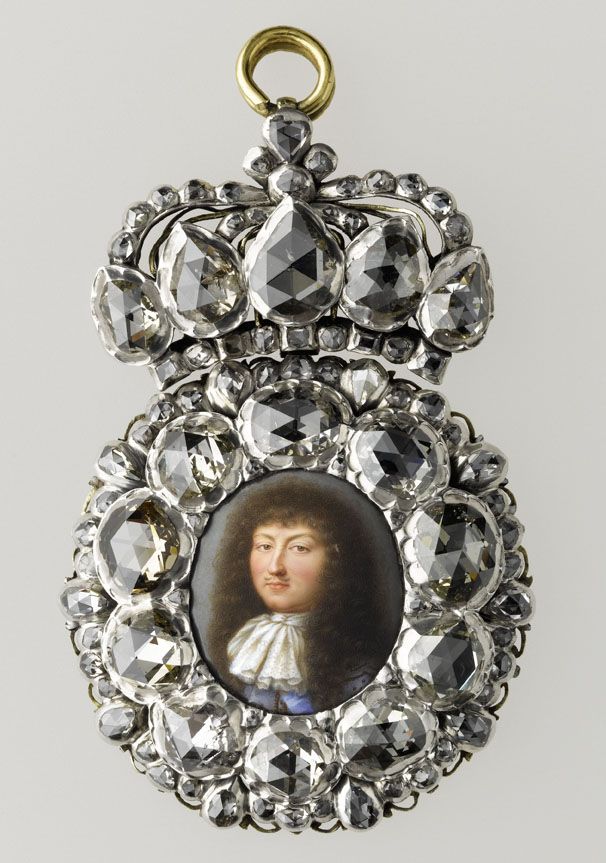
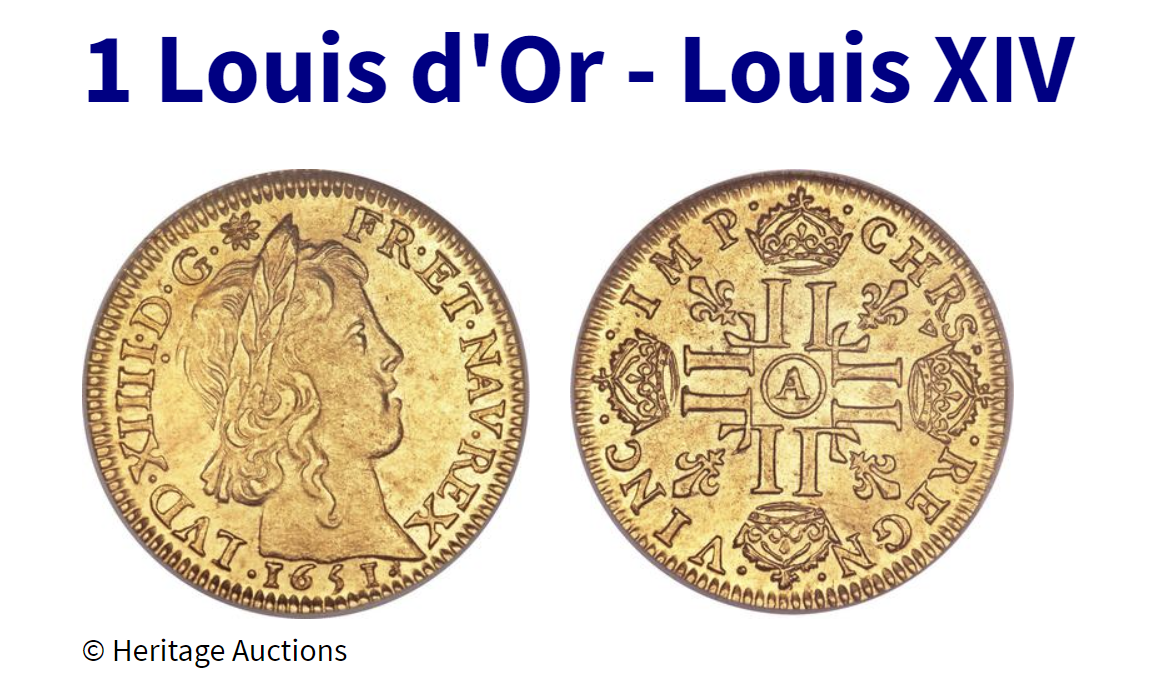
Knighthood
In 1675 Deane was knighted, and became Mayor of Harwich34There is some dispute over this, it could have been the mariner Deane – see Sir Anthony Deane – fact and fiction – Family History (wikidot.com) and was later, in conjunction with Pepys to become its Member of Parliament. Despite the strong association with Harwich, he lived in London at the time. Whether he ever had a house in Harwich is not known. Shortly afterwards he also found time to be M.P. for Shoreham.
In 1683, Sir Anthony Deane was officially granted his coat of arms, the description of which is said to have been “Argent on a chevron sable between three Cornish choughs proper as many crosses patty or“35https://harwicensis.home.blog/2021/12/17/on-this-day-december-17/ .
This seems to have been some time after his knighthood. The Deane book has a different account, as on many other matters:
Their son Anthony was born at Gloucester 1623. It was his son Anthony who became the noted Admiralty Commissioner. The arms con- firmed to Sir Anthony’s grandson only differed from Sir Richard’s in being ” Or and sable ” instead of ” Argent and gules.” To the tortoise crest was added the additional one of the stern of a ship, Royal Charles.
Deane a Traitor?
More political change in 1679, the popish plot, removed Pepys and Deane from their roles and saw them briefly in prison for treason. They were released but did not immediately resume their roles. Between then and 1684, when the King re-asserted control of the Navy, the Navy fell into disrepair.
In 1681, Deane joined Pepys as a Fellow of the Royal Society36List of Fellows of the Royal Society 1660 – 2007 and would have associated with Newton, Hooke, Boyle, Wren, Halley and other great men of the time. Newton was firmly on the other side of the religious schism and may not have been over-friendly with Deane. Edmond Halley, although a younger man and a fellow non-juror, would have much to discuss with Deane given his sea-faring exploits and knowledge. In the 1680s Deane earned a considerable income from building private ships, such as Doggers or fishing vessels and, most probably yachts37For Harwich Ships built see Taylor, Silas. as well as Lavery 38The Updated version of Silas Taylor’s account Wellcome Collection. ‘The History and Antiquities of Harwich and Dovercourt, Topographical, Dynastical and Political / First Collected by Silas Taylor Alias Domville, Gent. …; and Now Much Enlarged in All Its Parts with Notes and Observations Relating to Natural History … by Samuel Dale.’
Deane’s Island
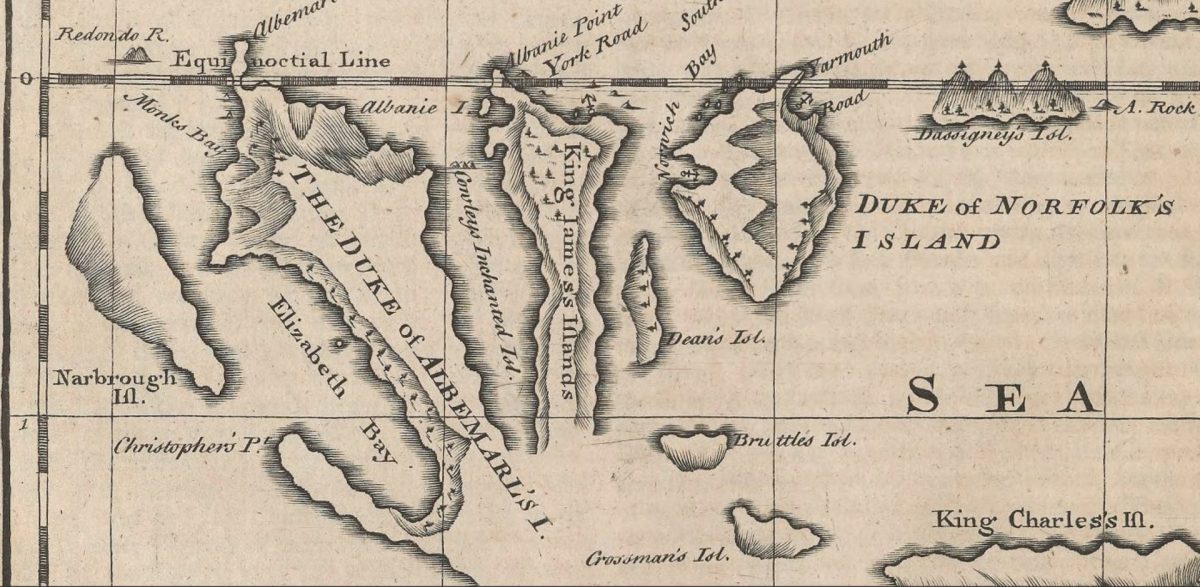
In 1684 Captain Cowley, who was sailing as a Buccaneer with Captain Dampier, surveyed the, now, Galapagos Islands and named a small island, probably now Pinzón, after Deane39Deane’s island shown on the chart in – Navigantium Atque Itinerantium Bibliotheca, or, A Complete Collection of Voyages and Travels : Originally Published in Two Volumes in Folio. 1744. . This was later re-named as Duncan Island so Deane’s reign may have been short. This is just below the Equator at 0°36’S 90°40’W. The actual longitude is significantly different to Cowley’s at about 83°20’W although this was a century before the Longitude problem was resolved and, in any case, the Prime Meridian was different. Certainly, Fitzroy, an illegitimate descendant of Charles II, would have resolved the issue when he visited with Darwin.
Rebuilding the Navy
In 1684, with Pepys back in control he issued the ‘State of the Royal Navy of England…May 1684’. The following year, when James II, previously Duke of York, ascended the throne following the death of Charles II, James established the ‘Special Commission’ to rebuild the Navy which enabled Deane to redress the situation rapidly and effectively.
Of 179 ships, 142 were unfit for service401685 – Plan to Save Navy – Portsmouth Royal Dockyard Historical Trust (portsmouthdockyard.org.uk) . Pepys, of course, wanted Deane to produce the ‘Plan to save the Navy’ but Deane would not accept the post on the offered salary of £500 even after the direct request of the King. He was eventually appointed, it seems at double that salary, so was clearly aware of his own worth. It is around this time that we learn Deane had a family of fifteen to feed so he would have been grateful for the extra pay. Deane’s work was highly effective in re-building the fleet and restoring infrastructure, all under budget.
Out of favour once again
However, this was the end of his work for the Crown. Pepys and Deane had been close to the Stuart King James and the Duke of York. On the change of Regime in 1689, in common with Pepys, Deane was a non-juror41 Non-juror see Wikipedia Nonjuring schism . This meant that following the exile of James II both refused to take the oath to the protestant William and Mary.
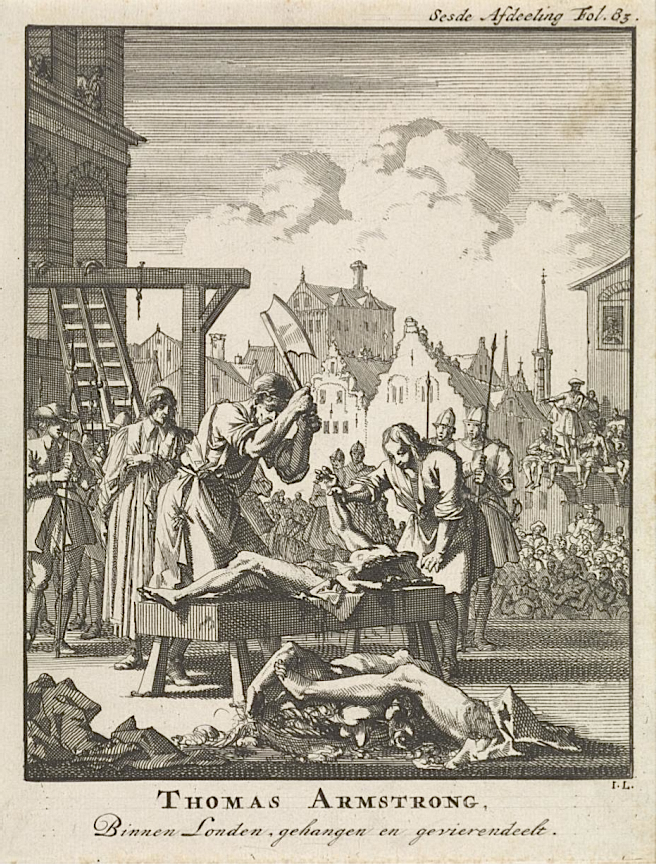
Jan Luyken, Public domain, via Wikimedia Commons
A spell in the Tower was involved for alleged treason but both men escaped the severe penalties meted out to others. This was unfortunate since, in the 1680s, English shipbuilding had been at a level far below the Netherlands and France. By the mid-1690s it exceeded both and went on to far outstrip their combined rate of construction. Deane would have been a major asset in this programme and perhaps should have been in charge.
October 29, 1689, Sir Anthony writes to Mr. Pepys42Deane, Mary cn, and John Bathurst Deane. The Book of Dene, Deane, Adeane. A Genealogical History. London, E. Stock, 1899. :
“Sir,
This is only to let you know that I am alive. I have nothing to do but to read, walk, and prepare for all the chances attending this obliging world. I have the old soldier’s request (to Charles V.), ‘A little space between business and the grave,’ which is very pleasant on many considerations. ” As most men towards their latter end grow serious, so do I in assuring you that I am
“Your very humble servant,
“Anthony Deane.
Deane and Czar Peter the Great
Later, in 1698, Deane advised Czar Peter the Great, who was on his “Grand Embassy” to England. He arranged for his son, John43Harwicencis says John went to Russia which agrees with some other sources, it has been said it was Anthony Jr. , to accompany the Czar on his return to Russia. The Czar had also engaged Jon Nye44The Story of Joseph Noy :Peter the Great’s English Master Shipbuilder.
Joseph Nye – Peter the Great’s Master Shipbuilder | World History , who had worked under Deane at Portsmouth. Once in Russia, Nye and young Deane combined to build the Czar’s fleet45The Tsar Carpenter Monument in St. Petersburg, Russia (saint-petersburg.com) .
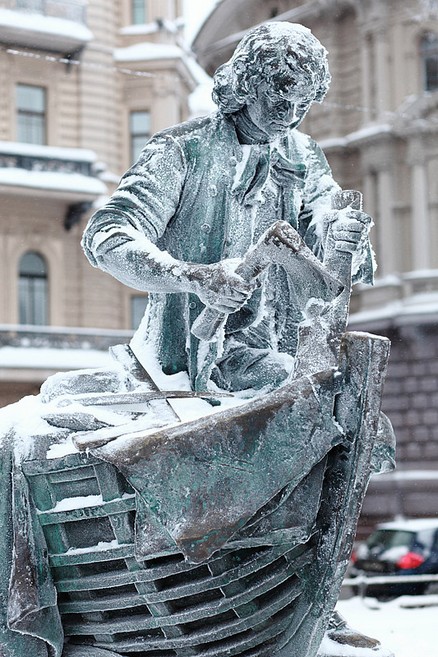
St. Petersburg
Given the connection of both men with Deane it is conceivable that they were both selected by him for the task, Nye had been building his own ships by 1695 so may have been the senior of the two men. Sadly, Deane’s son died in Russia with the work being continued by Nye.

oil on canvas, 1690
NPG 2124© National Portrait Gallery, London
The death of Pepys in 1703 would have been a blow to Deane, now seventy, as the two had been close for forty years. Deane was a pallbearer at the funeral and received a Ring of Mourning worth twenty shillings46Ring of Mourning list in Pepys’ Diary .
The End
Deane died at his house in Charterhouse Square, London on 11 June 1721, aged 88, and was buried at St. Olave’s, Hart Street47Death – DEANE, Sir Anthony (1633-1721), of Crutched Friars, London. | History of Parliament Online – dates do not agree with age at death 1721-1633=88 not 96 as stated. although his headstone has now gone48Photos of Anthony Deane – Find a Grave Memorial . His will shows him to have been in comfortable, though not opulent circumstances, with no land or property other than houses in Ipswich.
Deane had done so much to lay the foundations of organisation and design that enabled England’s later naval superiority yet, perhaps because of his earlier connection with the Stuarts, received insufficient recognition. He must have been an excellent administrator with a strong methodical approach yet also showed the ability to innovate. A.W.Johns sums up Deane as being
“…the ablest naval constructor of the period, and his record of work for the navy is one which very few have equalled”.
A.W.Johns
In Memoriam
Other than his buoy Deane’s name is only locally commemorated in Deane’s Close, Harwich. The one-time Sir Anthony Deane School in Harwich has been re-named and he does not have a blue plaque in London, Portsmouth or Ipswich. The red can buoy off the Haven seems scant recognition for such a man.
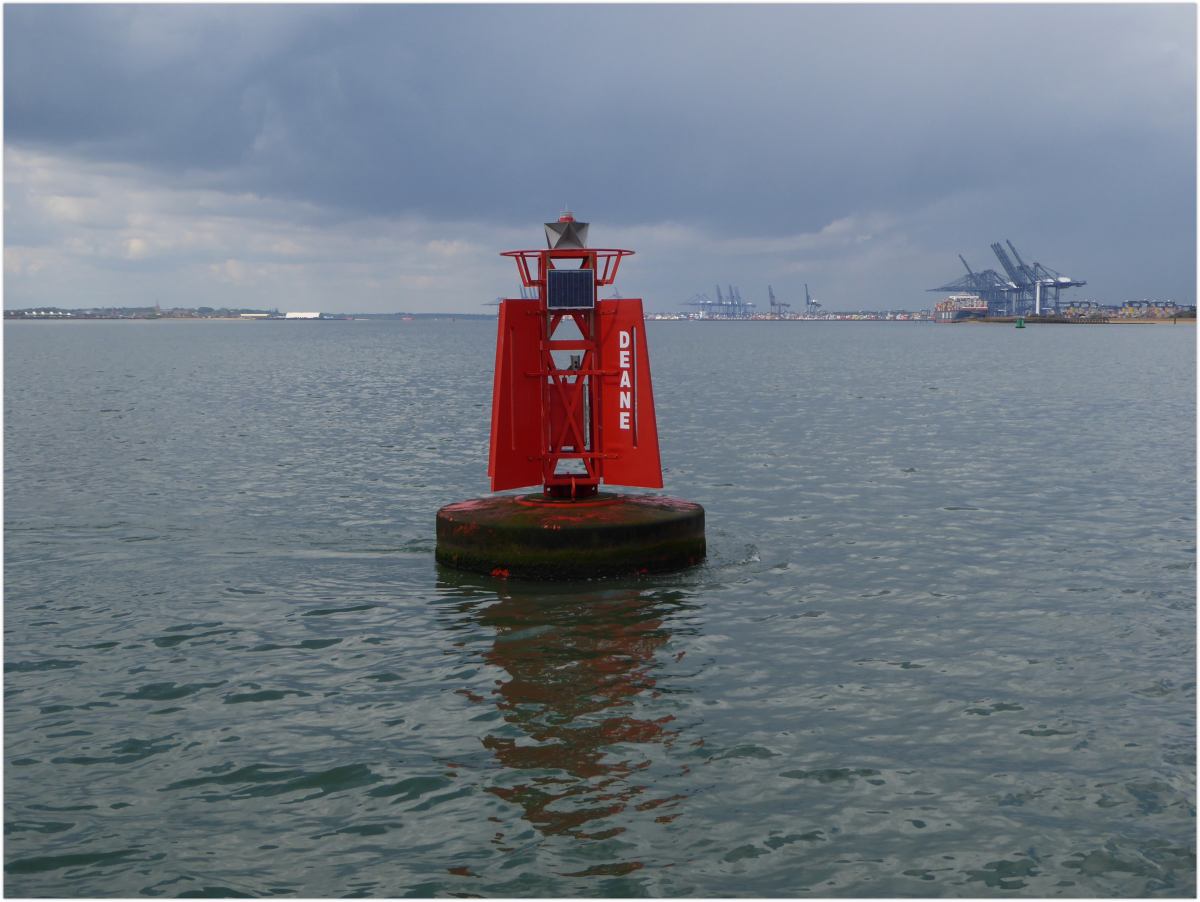
Questions
Find: CHARLES II’S YACHTS. AN ORIGINAL ARTICLE FROM HISTORY TODAY MAGAZINE, 1962 – there should be illustrations of Louis XIV yachts somewhere.
To check – Ships and Shipbuilders. 2010, https://www.pen-and-sword.co.uk/Ships-and-Shipbuilders-Hardback/p/2466.
Where was Deane’s house in Ipswich?
Did Deane have a house in Harwich?
Does Deane’s house in London survive?
Notes

Sources
‘Deane’s Doctrine of Naval Architecture, 1670 – Sir Anthony Deane – Introduced by Brian Lavery’- This is the text of Deane’s work, original in Pepys Library). There is a preface which neatly summarises Deane’s career and the circumstances of the time. He gives DoB as 1638 which is probably an an error. Original print of Doctrine, although at Pepys library, not found elsewhere.
Brian Lavery, Royal Yachts under Sail (Barnsley: Seaforth Publishing, 2022).
Johns, A. W. ‘SIR ANTHONY DEANE’. The Mariner’s Mirror 11, no. 2 (January 1925): 164–93. . – by far the fullest account although he associates Deane’s birth with Harwich and has the wrong date of birth.
See HARWICH DOCKYARD: The Mariner’s Mirror: Vol 13, No 2
Sir Anthony Deane: A Brief Harwich Primer – this site has several, very well researched articles on Deane and his family and provided many useful leads.
- The Birth of Sir Anthony Deane – Harwicensis (home.blog)
- The Early Life of Sir Anthony Deane – Harwicensis (home.blog)
- The Three Wives of Sir Anthony Deane – Harwicensis (home.blog)
- The Children & Descendants of Sir Anthony Deane – Harwicensis (home.blog)
- The Miscellanea of Sir Anthony Deane – Harwicensis (home.blog)
Deane, Mary cn, and John Bathurst Deane. The Book of Dene, Deane, Adeane. A Genealogical History. London, E. Stock, 1899. page 59 – this account seems confused and introduces a grandson. There is some information of the coat of arms. Not too sure about it.
ANTHONY DEANE was the son of William Deane and Margaret Wickham, and elder brother of Edward of Guyting Poer. He married Gillian Humphreys in 1603, of Lower Guyting.
Their son Anthony was born at Gloucester 1623. It was his son Anthony who became the noted Admiralty Commissioner. The arms confirmed to Sir Anthony’s grandson only differed from Sir Richard’s in being ” Or and sable ” instead of ” Argent and gules.” To the tortoise crest was added the additional one of the stern of a ship, Royal Charles.
Anthony began life as a Republican, served in the navy, and was present in some of the engagements with the Dutch under his famous cousin.
After the Restoration, he had a post in the Woolwich Dockyard. There is a letter from him to Henry Cromwell, whom he addresses as “My Lord,” in 1658, in which he beseeches him to be careful whom he trusts and confides in. Anthony was afterwards one of his pall-bearers.
Both Pepys and Evelyn frequently mention him in their Diaries.
Samuel Pepys Diary – a direct account. Samuel Pepys on Deane
Deane, Sir Anthony (c. 1638–1720?), shipbuilder | Oxford Dictionary of National Biography (oxforddnb.com) – this perpetuates the confusion of Deanes and makes his birth date is 1638.
A good biography on Wikitree and discussion of identification here.
History of Parliament – DEANE, Sir Anthony (1633-1721), of Crutched Friars, London.
Wikipedia on Deane has some errors and needs correcting.
Useful list of key dates on Three Decks Forum.
Background – Memoirs of the English Affairs, Chiefly Naval, from the Year 1660, to 1673, 1729.
THE WORK OF THE SURVEYORS OF THE NAVY DURING THE PERIOD OF THE ESTABLISHMENTS = A comparative study of naval architecture between 1672 and 1755 – JAMES PETER HEMINGWAY 2002 – incorrect DoB. This gives an excellent description of the politics of the time and explains Deane’s relationship with Tippets.
List of all ships built at Harwich in the Navy dockyard to 1812
CHARLES II 1660 – 1685 (C2) Lived 1630 – 1685 (timewisetraveller.co.uk)
Mentions in Evelyn’s Diaries
Footnotes
- 1The Birth of Sir Anthony Deane discussion and the unravelling of the many of that name. A.W.Johns and some others give Deane’s date of birth as 1638 but 1633 seems more probable
- 2Alternative Deane – Deane of Dynes Hall, Great Maplestead, Essex
- 3
- 4Admiral Richard Deane as possible relation is mentioned in History of Parliament Online unlikely given this explanation The Wrong Deanes – Harwicensis
- 5Merchant Taylors School Register 1646 enrolment, note that apprenticeships usually started at 16.
- 6See the Pett dynasty for shipbuilding at that time
- 7A.W.Johns says Deane was building yachts Charles and Anne in 1660 – these dates conflict with Lavery and the dates in Wikipedia
- 8Slide Rule mentioned in Pepys Diary – Tuesday 14 April 1663, there were various devices of this nature.
- 9The Updated version of Silas Taylor’s account Wellcome Collection. ‘The History and Antiquities of Harwich and Dovercourt, Topographical, Dynastical and Political / First Collected by Silas Taylor Alias Domville, Gent. …; and Now Much Enlarged in All Its Parts with Notes and Observations Relating to Natural History … by Samuel Dale.’
- 10Resolution – it is not yet confirmed if the wreck found at Norman’s Bay on the South Coast in 2007 is the Resolution. – Norman’s Bay Wreck
- 11A full account of the Dutch invasion is given in Hussey, Frank. Suffolk Invasion: The Dutch Attack on Landguard Fort, 1667. T. Dalton, 1983.
- 12
- 13
- 14Charts sufficiently accurate for the needs of the Dutch would not exist until 1804 and Graeme Spence.
- 15Lighthouse – . Lightouses; Their History and Romance., 1895.
- 16Careening engine – Johns, A. W. ‘Sir Anthony Deane’. The Mariner’s Mirror 11, no. 2 (1 January 1925): 164–93.
- 17(The Updated version of Silas Taylor’s account Wellcome Collection. ‘The History and Antiquities of Harwich and Dovercourt, Topographical, Dynastical and Political / First Collected by Silas Taylor Alias Domville, Gent. …; and Now Much Enlarged in All Its Parts with Notes and Observations Relating to Natural History … by Samuel Dale.’
- 18‘Deane’s Doctrine of Naval Architecture, 1670 – Sir Anthony Deane – Introduced by Brian Lavery’ – This is held in the Pepys library at Cambridge.
- 19Friday 1 April 1664 (The Diary of Samuel Pepys) (pepysdiary.com) Fragments of Ancient English Shipwrighty – The Nautical Archaeology Digital Library (shiplib.org) and also Mathew Baker and the Art of the Shipwright. https://www.mhs.ox.ac.uk/staff/saj/thesis/baker.htm. Accessed 18 Mar. 2023.
- 20Bushnell, Edmund. The Compleat Ship-Wright Plainly and Demonstratively Teaching the Proportions Used by Experienced Ship-Wrights According to Their Custome of Building, Both Geometrically and Arithmetically Performed : To Which by Edmund Bushnell, Ship-Wright. Jan. 2007, https://ota.bodleian.ox.ac.uk/repository/xmlui/handle/20.500.12024/A30706.
- 21The Method of Building, Rigging, Apparelling and Furnishing His Ma:Ties. Shipps of Warr According to Their Rates. With the Exact Proportion and Charge of All Things Requisite Thereunto. Also the Charge of Wages, Victualls, & Necessaries as Well as for Ships in Harb.r as at Sea. The Numbers and Charge of Officers and Workmen at Each Dockyard for Building and Repairing His Ma:Ties. Ships &c. The Salaries and Allowances Granted to Commissioners & Officers of His Majesties Navy. And the Whole Charge of the Same for One Year. – Yale University Library. https://collections.library.yale.edu/catalog/17268860. Accessed 18 Mar. 2023.
- 22European shipbuilding see – Corradi, Massimo, and Claudia Tacchella. AT THE ORIGINS OF SHIPBUILDING TREATISES: JOSEPH FURTTENBACH AND THE ARCHITECTURA NAVALIS. 2018.
- 23Pantograph – Wikipedia
- 24Iron dogs or knees – Goodwin, Peter. ‘The Influence of Iron in Ship Construction: 1660 to 1830’. The Mariner’s Mirror 84, no. 1 26–40.
- 25L. G. Carr Laughton (1940) HULL PROTECTION, The Mariner’s Mirror, 26:1
- 26It has been said that this was John but surely he would have been too young at 16? 247182.pdf (bris.ac.uk)
- 27
- 28The Updated version of Silas Taylor’s account Wellcome Collection. ‘The History and Antiquities of Harwich and Dovercourt, Topographical, Dynastical and Political / First Collected by Silas Taylor Alias Domville, Gent. …; and Now Much Enlarged in All Its Parts with Notes and Observations Relating to Natural History … by Samuel Dale.’
- 29(The Updated version of Silas Taylor’s account Wellcome Collection. ‘The History and Antiquities of Harwich and Dovercourt, Topographical, Dynastical and Political / First Collected by Silas Taylor Alias Domville, Gent. …; and Now Much Enlarged in All Its Parts with Notes and Observations Relating to Natural History … by Samuel Dale.’
- 30Brian Lavery, Royal Yachts under Sail (Barnsley: Seaforth Publishing, 2022).
- 31
- 32In return for his services Louis, or perhaps his Minister Colbert gave him six hundred pistoles – Dictionary of National Biography, 1885-1900/Deane, Anthony
- 33
- 34There is some dispute over this, it could have been the mariner Deane – see Sir Anthony Deane – fact and fiction – Family History (wikidot.com)
- 35https://harwicensis.home.blog/2021/12/17/on-this-day-december-17/
- 36List of Fellows of the Royal Society 1660 – 2007
- 37For Harwich Ships built see Taylor, Silas. as well as Lavery
- 38The Updated version of Silas Taylor’s account Wellcome Collection. ‘The History and Antiquities of Harwich and Dovercourt, Topographical, Dynastical and Political / First Collected by Silas Taylor Alias Domville, Gent. …; and Now Much Enlarged in All Its Parts with Notes and Observations Relating to Natural History … by Samuel Dale.’
- 39Deane’s island shown on the chart in – Navigantium Atque Itinerantium Bibliotheca, or, A Complete Collection of Voyages and Travels : Originally Published in Two Volumes in Folio. 1744.
- 40
- 41Non-juror see Wikipedia Nonjuring schism
- 42Deane, Mary cn, and John Bathurst Deane. The Book of Dene, Deane, Adeane. A Genealogical History. London, E. Stock, 1899.
- 43Harwicencis says John went to Russia which agrees with some other sources, it has been said it was Anthony Jr.
- 44
- 45
- 46
- 47Death – DEANE, Sir Anthony (1633-1721), of Crutched Friars, London. | History of Parliament Online – dates do not agree with age at death 1721-1633=88 not 96 as stated.
- 48
Image Sources and Credits
- 1The Birth of Sir Anthony Deane discussion and the unravelling of the many of that name. A.W.Johns and some others give Deane’s date of birth as 1638 but 1633 seems more probable
- 2Alternative Deane – Deane of Dynes Hall, Great Maplestead, Essex
- 3
- 4Admiral Richard Deane as possible relation is mentioned in History of Parliament Online unlikely given this explanation The Wrong Deanes – Harwicensis
- 5Merchant Taylors School Register 1646 enrolment, note that apprenticeships usually started at 16.
- 6See the Pett dynasty for shipbuilding at that time
- 7A.W.Johns says Deane was building yachts Charles and Anne in 1660 – these dates conflict with Lavery and the dates in Wikipedia
- 8Slide Rule mentioned in Pepys Diary – Tuesday 14 April 1663, there were various devices of this nature.
- 9The Updated version of Silas Taylor’s account Wellcome Collection. ‘The History and Antiquities of Harwich and Dovercourt, Topographical, Dynastical and Political / First Collected by Silas Taylor Alias Domville, Gent. …; and Now Much Enlarged in All Its Parts with Notes and Observations Relating to Natural History … by Samuel Dale.’
- 10Resolution – it is not yet confirmed if the wreck found at Norman’s Bay on the South Coast in 2007 is the Resolution. – Norman’s Bay Wreck
- 11A full account of the Dutch invasion is given in Hussey, Frank. Suffolk Invasion: The Dutch Attack on Landguard Fort, 1667. T. Dalton, 1983.
- 12
- 13
- 14Charts sufficiently accurate for the needs of the Dutch would not exist until 1804 and Graeme Spence.
- 15Lighthouse – . Lightouses; Their History and Romance., 1895.
- 16Careening engine – Johns, A. W. ‘Sir Anthony Deane’. The Mariner’s Mirror 11, no. 2 (1 January 1925): 164–93.
- 17(The Updated version of Silas Taylor’s account Wellcome Collection. ‘The History and Antiquities of Harwich and Dovercourt, Topographical, Dynastical and Political / First Collected by Silas Taylor Alias Domville, Gent. …; and Now Much Enlarged in All Its Parts with Notes and Observations Relating to Natural History … by Samuel Dale.’
- 18‘Deane’s Doctrine of Naval Architecture, 1670 – Sir Anthony Deane – Introduced by Brian Lavery’ – This is held in the Pepys library at Cambridge.
- 19Friday 1 April 1664 (The Diary of Samuel Pepys) (pepysdiary.com) Fragments of Ancient English Shipwrighty – The Nautical Archaeology Digital Library (shiplib.org) and also Mathew Baker and the Art of the Shipwright. https://www.mhs.ox.ac.uk/staff/saj/thesis/baker.htm. Accessed 18 Mar. 2023.
- 20Bushnell, Edmund. The Compleat Ship-Wright Plainly and Demonstratively Teaching the Proportions Used by Experienced Ship-Wrights According to Their Custome of Building, Both Geometrically and Arithmetically Performed : To Which by Edmund Bushnell, Ship-Wright. Jan. 2007, https://ota.bodleian.ox.ac.uk/repository/xmlui/handle/20.500.12024/A30706.
- 21The Method of Building, Rigging, Apparelling and Furnishing His Ma:Ties. Shipps of Warr According to Their Rates. With the Exact Proportion and Charge of All Things Requisite Thereunto. Also the Charge of Wages, Victualls, & Necessaries as Well as for Ships in Harb.r as at Sea. The Numbers and Charge of Officers and Workmen at Each Dockyard for Building and Repairing His Ma:Ties. Ships &c. The Salaries and Allowances Granted to Commissioners & Officers of His Majesties Navy. And the Whole Charge of the Same for One Year. – Yale University Library. https://collections.library.yale.edu/catalog/17268860. Accessed 18 Mar. 2023.
- 22European shipbuilding see – Corradi, Massimo, and Claudia Tacchella. AT THE ORIGINS OF SHIPBUILDING TREATISES: JOSEPH FURTTENBACH AND THE ARCHITECTURA NAVALIS. 2018.
- 23Pantograph – Wikipedia
- 24Iron dogs or knees – Goodwin, Peter. ‘The Influence of Iron in Ship Construction: 1660 to 1830’. The Mariner’s Mirror 84, no. 1 26–40.
- 25L. G. Carr Laughton (1940) HULL PROTECTION, The Mariner’s Mirror, 26:1
- 26It has been said that this was John but surely he would have been too young at 16? 247182.pdf (bris.ac.uk)
- 27
- 28The Updated version of Silas Taylor’s account Wellcome Collection. ‘The History and Antiquities of Harwich and Dovercourt, Topographical, Dynastical and Political / First Collected by Silas Taylor Alias Domville, Gent. …; and Now Much Enlarged in All Its Parts with Notes and Observations Relating to Natural History … by Samuel Dale.’
- 29(The Updated version of Silas Taylor’s account Wellcome Collection. ‘The History and Antiquities of Harwich and Dovercourt, Topographical, Dynastical and Political / First Collected by Silas Taylor Alias Domville, Gent. …; and Now Much Enlarged in All Its Parts with Notes and Observations Relating to Natural History … by Samuel Dale.’
- 30Brian Lavery, Royal Yachts under Sail (Barnsley: Seaforth Publishing, 2022).
- 31
- 32In return for his services Louis, or perhaps his Minister Colbert gave him six hundred pistoles – Dictionary of National Biography, 1885-1900/Deane, Anthony
- 33
- 34There is some dispute over this, it could have been the mariner Deane – see Sir Anthony Deane – fact and fiction – Family History (wikidot.com)
- 35https://harwicensis.home.blog/2021/12/17/on-this-day-december-17/
- 36List of Fellows of the Royal Society 1660 – 2007
- 37For Harwich Ships built see Taylor, Silas. as well as Lavery
- 38The Updated version of Silas Taylor’s account Wellcome Collection. ‘The History and Antiquities of Harwich and Dovercourt, Topographical, Dynastical and Political / First Collected by Silas Taylor Alias Domville, Gent. …; and Now Much Enlarged in All Its Parts with Notes and Observations Relating to Natural History … by Samuel Dale.’
- 39Deane’s island shown on the chart in – Navigantium Atque Itinerantium Bibliotheca, or, A Complete Collection of Voyages and Travels : Originally Published in Two Volumes in Folio. 1744.
- 40
- 41Non-juror see Wikipedia Nonjuring schism
- 42Deane, Mary cn, and John Bathurst Deane. The Book of Dene, Deane, Adeane. A Genealogical History. London, E. Stock, 1899.
- 43Harwicencis says John went to Russia which agrees with some other sources, it has been said it was Anthony Jr.
- 44
- 45
- 46
- 47Death – DEANE, Sir Anthony (1633-1721), of Crutched Friars, London. | History of Parliament Online – dates do not agree with age at death 1721-1633=88 not 96 as stated.
- 48
